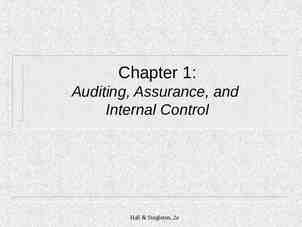ANGER & ADOLESCENTS BY: CLAUDIA SCHMIDT , MS, LPC MENTAL HEALTH
16 Slides481.15 KB

ANGER & ADOLESCENTS BY: CLAUDIA SCHMIDT , MS, LPC MENTAL HEALTH SUPERVISOR NUECES COUNTY JUVENILE JUSTICE CENTER

What is Anger? An emotional state that can vary in intensity from mild annoyance to rage (Spielberger, Jacobs, Russell, Crane, 1985). Anger is an emotional state typically accompanied by psychological and biological changes. Is Anger good or bad? What does Anger look like in boys? What does Anger look like in girls?

Why Learn About Anger? Aggression in youth is one of the most frequent reasons for a psychiatric referral. Adolescent aggression represents a major public health concern. Males commit more violent crimes than females, although aggression in females is increasing. Recent survey found 23% increase in violent crime arrests for adolescent females. vs. 11% in males. 44% of guns used in crimes were owned by persons younger than 25, with 11% belonging to those younger than 17. (Center for Disease Control and Prevention, 2000)

Adolescents & Anger Boys and Girls typically respond to distressing events in somewhat different way Boys externalize their emotion as anger (Chuick et al., 2009; Magovcevic & Addis, 2008) Girls internalize it through rumination (Rood, Roelofs, Bogels, Nolen-Hoeksema, & Schouten, 2009). Rumination- focused attention on the symptoms of one’s distress Uncontrolled anger can be a significant problem for adolescents and can result in depression, suicidal tendencies, substance abuse, hostility, rage, violence, and crime.

Types of Anger Spielberger (1999) identified two aspects of anger: state anger in which the individual responds emotionally to circumstances trait anger which is a more pervasive/unwelcome response (intense rage) State Anger Temporary emotional reaction (Emotion response) Trait Anger Tendency to react angrily to perceived situations (Physical response)

Normal versus Maladaptive Pathological aggression: Occurs outside an expectable social context Either in the absence of antecedent cues or with an intensity, frequency, duration &/or severity that is disproportionate to its causes It generally doesn’t terminate within an appropriate timeframe and in response to feedback.(Newcorn, Ivanov, Chacko, Halperin, 2010)

Female Adolescents & Anger Internalize their feelings Sadness Crying Moodiness Yelling, argumentative, fighting Feminine gender role denounces the direct expression of anger. It has been suggested that this inability to express anger when emotionally aroused results in frustration that is discharged through tears (Crawford, Kippax, Onyx, Gault, & Benton, 1992; Eatough, Smith, & Shaw, 2008).

Male Adolescent & Anger Externalizing Outbursts Fighting Risky behaviors (bullying, threatening) As infants, boys express a wider range of emotions than girls, but by the age of 4 to 6 years, boys are so successful at masking their emotions that their mothers are less able to identify them (Buck, 1977).

Internalizing versus Externalizing The mental disorders that children can develop are commonly divided into two groups: disruptive or externalizing behavior disorders (e.g., attention-deficit hyperactivity disorder, conduct problems) and emotional or internalizing behavior disorders (e.g., anxiety, depression). Girls – More Internalizing Disorders Boys – More Externalizing Disorders (Rood et al., 2009)

Anger is Commonly Associated With Attention Deficit Hyperactive Disorder (ADHD) (Externalizing) Conduct Disorder (Externalizing) Oppositional Defiant Disorder (ODD) (Externalizing) Mood Disorders (Internalizing) If Untreated: antisocial issues, conduct problems, academic challenges, family conflict, delinquency, substance abuse and crime (Harrington, 2010)

Self-Report Assessment Tools for Anger 41-item Adolescent Anger Rating Scale (Burney, 2001) 29-item Aggression Questionnaire (Buss & Perry, 1992) Online version 30-item Children’s Inventory of Anger (Nelson & Finch, 2000) 54-item How I Think Questionnaire (Gibbs, Barriga, & Potter, 2001) 20-item Normative Beliefs About Aggression Scale (Huseman & Guerra, 1997), 54-item Multidimensional School Anger Inventory (Smith, Furlong, Bates, & Laughlin, 1998). Always include other sources when using self report measure due to social desirability and response bias (Fiendler & Engel, 2011)

Assessing Anger in Adolescents Psychological profile and behavioral history of the aggressive adolescent should indicate that deficiencies in arousal management, impulse control (or the ability to delay behavioral responses to aversive stimuli), and prosocial responses to interpersonal provocation exist. Determine what has happened to this adolescent/History Also during the interview and screening consider including level of cognitive functioning, emotional maturity, group readiness, and motivation for treatment (see Feindler & Baker, 2004).

ANGER & DIAGNOSES ADHD Anger can manifest itself in children and adolescents due to impulsivity and challenges with expressing emotions. Oppositional Defiant Disorder (ODD) frequent and persistent pattern of anger, irritability, arguing, and defiance Bipolar Disorder quick to find fault in others, irritability and hostility Conduct Disorder bully, threaten others, confrontation and physically cruel Disruptive Mood Dysregulation Disorder chronic irritability, severe temper outburst, angry most of the day (Seligman & Reichenberg, 2007)

ANGER & DIAGNOSES Major Depressive Disorder Depressive symptoms are related to direct forms of reactive aggression (Fite, Raine, Stouthamer,-Loeber, Loeber, Pardini, 2010). In children and adolescents, sustained irritability is one of the diagnostic criteria for depression (American Psychiatric Association, 2000). Post-Traumatic Stress Disorder (PTSD) reactive aggression due to trauma reminders, irritability, mood swings, extreme emotional reactions, repeating the behaviors associated with the trauma (Seligman & Reichenberg, 2007)

Next Steps Review all Assessments Decide if there is a diagnosis & Create a Plan of Recovery Anger Management Skills Social Skills Emotional Regulation Skills Cognitive Behavioral Skills Narrative Therapy (externalizing the problem) Reality Therapy

Thank You! Contact: Claudia Schmidt, MS, LPC Mental Health Supervisor Nueces County Juvenile Justice Center [email protected] References available upon request.






